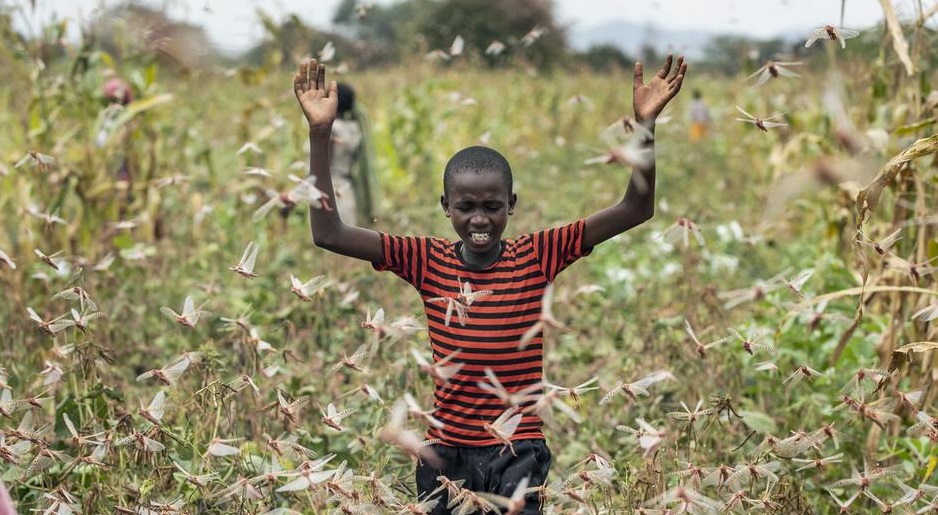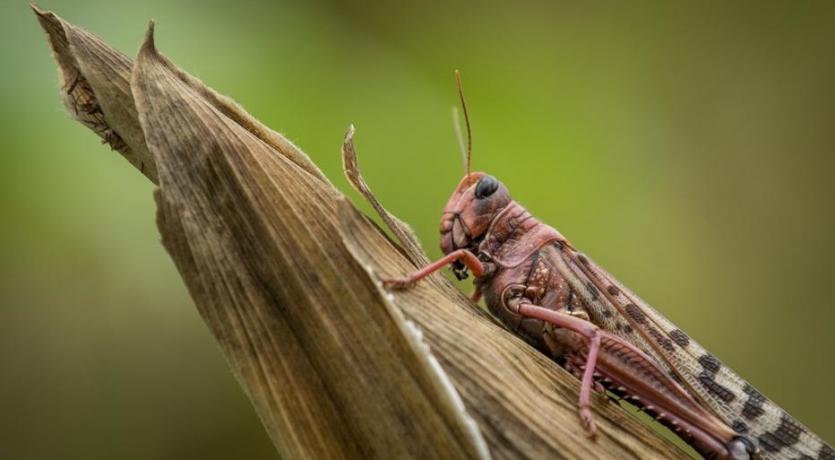Photo:AP
 FEBRUARY 27th 2020
FEBRUARY 27th 2020
By Patryk Krych | The World Daily
Eastern Africa’s Great Locust Infestation
It’s not unheard of for a locust infestation to burn its way through Eastern Africa’s crops every year or so. It’s a process that’s become cyclical for the residents of the great continent. However, the most recent infestations have proven to be far from their regular yearly process.
The locust plagues -commonly known throughout the western world due to their Biblical apocalyptic appearance in the story of Moses- are by no means an intriguing story for Eastern African farmers, but rather a harsh reality they must contend with throughout their lives. They do not shy away from eating crops that, in such countries, are an extremely precious resource. Some types of locusts are known to be able to eat their own weight in food in a single day, and its these locusts that are devastating the land.
A large region of Eastern Africa’s residents are considered food-insecure at the moment, and likely wouldn’t do too well at withstanding any sorts of food shortages. The two regions struggling the most are arguably Somalia, currently seeing a state of emergency, and Kenya which is doing its best at withstanding the worst invasion that’s occurred in over 70 years. Containing and handling the infestation is looking to be a hard struggle.
Abdulah Hassan, a Somali herdsman, has expressed to reporters that "The locusts have destroyed all of our grazing land, and I am very worried that my livestock will starve and die because these locusts are everywhere and are taking over the whole area. But we can't fight them because their numbers are huge and they are uncontrollable."
A single swarm of the locusts is capable of eating through 423 million pounds of plants every day, according to National Geographic. Enough to strip an entire field of its growth within a matter of hours. Within only the space of year, the locusts have devoured and torn through over 170,000 acres of Somalian and Ethiopian land. Two countries that have a heavy reliance on crops in order to feed their populous.

Farmers in East Africa have been caught unawares by severe locust swarms that they can do little to prevent from razing their crops. Photo:AP
The problem has been accumulating over some time, seeing as Kenya have come to a temporary control issue regarding that they’ve run out of pesticides, Ethiopia doesn’t have enough planes to deal with the entirety of the pests, and both the countries of Somalia and Yemen are being torn asunder by civil war and threat. As such, the swarms numbers have been slowly accumulating since the year 2018, shortly after two cyclones had struck the Arabian Peninsula.
The unusually record high number of locusts accumulating in the Eastern portion of the continent are likely a cause of the bizarre and variating weather patterns that have been initiated and intensified over the course of time by climate change. These changes in weather patterns have created the ideal wet conditions to give locusts the perfect breeding ground, scientists say. Their population has increased over 400-fold, and could increase this way again by June if left uncheck. The situation’s only worsened after another cyclone hit the region near the end of 2019.
The locusts had recently reached the fertile Rift Valley farmland, based in Ethiopia. In total, the swarms have invaded at least 15 counties also including Uganda, Tanzania, and Sudan. The pure number of the pests is near uncontrollable, however, with swarms containing an estimated 40-80 million locusts per square kilometre.
The local communities contending with the threat are doing all that can be done in order to protect their vulnerable food sources. Many are attempting to scare them off with noises, and setting fires to keep them away. These are, however, not sustainable solutions to the bigger issue at hand. In fact, these may not be solutions at all, according to an expert from the United Nation's Food and Agriculture Organization, Keith Cressman who warns that "It's just moving the problem to their neighbors and then the locusts are becoming scattered, so they're not really a good target for control any longer."
Another member of the Food and Agriculture Organization of the United Nations, Dominique Burgeon, says "Now it's time for the international community to understand that it's an issue that needs to be dealt with now. Otherwise … there will be high levels of acute food insecurity. There will be million more people that will require food assistance and it will take us years to control the situation."
As farmers are planting their seeds for the next harvest, hoping to get some growth before the expected rains that may come in March, there is already another generation of locusts in the from of larvae in the soils, awaiting their time to swarm.
By Patryk Krych | The World Daily






